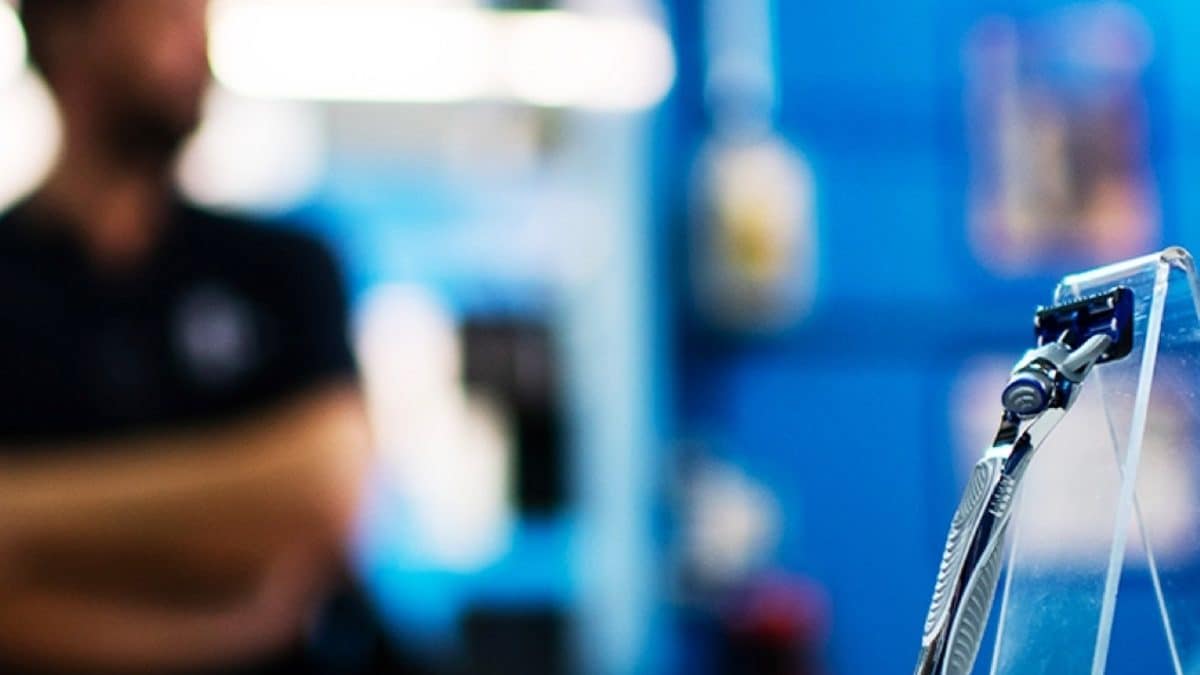[ad_1]
In a country known as the birthplace of the Kamasutra, it remains an eternal paradox that discussions about sexual wellness are trapped in taboos. India, in defiance of its diverse and liberating history, prefers to keep off open dialogues about pleasure. But all that may be changing.
So far, despite the deafening silence on the matter, the sexual wellness industry in India is booming — poised to hit $2.09 billion by 2030, boasting a robust CAGR of 5.8%. Clubbed under sex toys, sex therapists and performance enhancers, the global sexual wellness market has accounted for $39.42 billion in 2017 and expected to grow at a CAGR of 13.4% to reach $122.96 billion by 2026.
This explosive growth will be led by the Asia Pacific and within this larger region, the likes of India, China, Japan, and South Korea are the key market drivers, according to a Reuters report.
But while sex has remained a taboo for many Indians, there’s a growing awareness among urban Indians of sexual wellness and the concept of seeking help in case of problems. However, although the generations are changing and the mindset of people is evolving, the industry still lacks innovation and inclusivity.
Among the pack of startups trying to usher in the sexual wellness revolution in India is Sangya Project — founded in 2021 it is India’s sole ‘sex tech’ company manufacturing made in India vibrators.
Born from the vision of making pleasure accessible, Sangya recognises the dearth of designs attuned to Indian bodies in an industry craving evolution. Shweta Sangtani, Co-Founder and CEO of Sangya Project, told CNBC-TV18 that all the massagers sold here are imported from mostly China.
“These products are also often not made for Indian bodies. To cope with these challenges, Sangya decided to manufacture products here in India. This began in the year 2021 around its inception where we began making the non-vibrating massagers and ultimately led up to the first intimate massager to have been manufactured and sold in India (Sangya 1),” said Sangtani.
According to the co-founders Sangtani, Tanisha RK and Aashish Mehrotra (the three identify as a queer, poly family) the brand since its inception has seen 5x year-on-year growth both in terms of sales and revenue. Additionally, in terms of profit margin the company is at 60% gross margin and with manufacturing in India, they expect to see about 70% gross margin next year.
“We continue to increase the margins by way of smoothening the supply chain and lowering other costs by manufacturing in India,” added Sangtani.
From educating Indians to making products for Indians
Tanisha, Sangtani and Mehrotra told CNBC-TV18 that the idea of the Sangya Project started as a sex education page on Instagram during the peak of COVID-19 in 2020.
“So Sangya began when I had first started my training as a sex educator. The idea was for me to just get trained to start working in classrooms and engage in conversations around sex and sexuality. But what happened was that understandably, when you’re an educator working with minors, there are a lot of stakeholders involved… then a lot of the educational material is heavily censored and gets condensed,” said Tanisha.
This made them decide to focus on imparting sex education to adults who can then pass it on to their children in a manner they think is informed, safe, and constructive within their cultural contexts. Tanisha later discussed this idea with Sangtani and Mehrotra, leading to the formation of a proper platform for the same building of a community.
“We began receiving requests for guest writers soon after we started the page and it became amply clear that India in its current environment was ready to have these conversations around sex, sexuality and pleasure,” added Sangtani.
Later the idea to monetise the brand, yet also make access to information free, led to the birth of the Sangya Project.
“We decided to sell pleasure products to provide our customers with resources that would then help them in exploring their sexuality, and proceeded to incorporate Sangya as a company selling pleasure products in the year 2021,” said Sangtani.
The company’s USP in the industry, which has emerging players like MyMuse, Lezus and That Sassy Thing, is their use of tech, made in India ideas focusing on the needs of Indians as per cultural contexts and body type, the accessibility (making pleasure products for Indians affordable) and the idea of being forefront at normalising conversations around pleasure in the country.
“During its inception in 2021 and while researching the products available in the market, we realised that a lot of these were not made for Indian bodies,” said Mehrotra.
“Apart from that, there was no way to control the quality of the products and their imports in case there were situations such as the pandemic, geo-political tensions or external factors that could derail any such imports. There was also no way to modify these products based on the customer feedback. To tackle these issues, we decided to start manufacturing in India,” he elaborated.
The brand also received seed funding last year from IMBesharam, to manufacture pleasure products in India. IMBesharam’s investment in the Sangya Project is also aimed at making sexual wellness products more affordable across the country and pushing for far and wide accessibility of sex education and sexual awareness beyond metros.
When it comes to numbers, even as there is a consensus that it has become significantly less sleazy and uncomfortable shopping for sexual wellness products, the pleasure economy is decidedly in its nascent stages. Social media numbers are easier to access than actual sales information.
The brand has over 30,000 followers on Instagram organically and on its website the average time a user spends is over eight minutes. Additionally, when the company put its products on sale, their first slot was sold out in the first 24 hours.
“When we began a couple of years ago, we were very apprehensive and very certain that there would be a lot of hate, given the fact that we talk about sexual wellness and everything to do with sex is such a taboo in our country. And most of our experience, I’m proud to say has been quite the contrary. The amount of love and support we get is tremendous, which is why we’re still doing what we’re doing, despite how difficult this industry is to navigate. So, the overall response has been nothing short of a shocking,” said Sangtani.
But Sangya Project’s journey in India has been quite a rollercoaster owing to the hush-hush nature of the topic. Banks, payment processors, packaging companies and factory owners weren’t ready to work with the brand. “When we started it was a huge problem to find people to work with us,” said Mehrotra.
He added that getting something as simple as a bank account and a payment gateway was a struggle for the company.
“To be able to get something as basic as opening a bank account, or getting a payment gateway.. those things you wouldn’t think about if it was a coffee or a clothing brand. The first reaction, at least up until now, has been to shy away. The first reaction has been, ‘oh, this industry’,” he added.
Additionally, apart from that when it comes to marketing and ads on social media it’s a struggle as platforms put down the posts calling, it ‘against’ the policy, explained Tanisha.
Further when it comes to manufacturing, Sangtani mentioned that it was a trying and difficult experience to get to a point where they found someone willing to look at them and say, if China can do this, why can’t we.
However, things have changed and evolved a bit as the company has been seeing more acceptance in terms of manufacturing, logistics, packing and branding.
“It took a very long time to get there in terms of just the manufacturing of the product itself, the packaging, the logistics, everything around it. What makes me happy now is how much better it has gotten in the last couple of years and how traumatic this change has been. Considering the short period, we’re speaking about. it’s almost like a 180-degree turn where people are now beginning to understand and take this industry very, very seriously. People are becoming more accepting of the fact that pleasure is a part of wellness,” said Sangtani.
“It’s been a huge shift as two years ago banks and payment aggregators weren’t ready to talk to us and shied away but now there are two payment gateways in my inbox right now asking if they can add themselves onto our website,” said Mehrotra.
Demand from the remotest parts of India
When it comes to the sexual wellness industry in India, companies in the sector have doubled over the past three years, with more than 21 firms entering the Indian market since the pandemic cashing on the surging demand after such products become accessible due to online retailing. At present, there are more than 40 sexual wellness firms.
These together have also raised a combined $24 million in funding since 2020 according to data from Tracxn.
Additionally, according to data by ThatPersonal.com, released in 2023, the sale of sex toys and other adult products increased by over 60% post-lockdown.
According to data available from aggregator websites like IMBesharam and LoveDepot, a lot of this demand is coming from tier 2 and 3 cities in India. Something that the Sangya Project is also seeing.
“In the past month, we have delivered to Andaman and Nicobar, Jammu, Imphal, and Thiruvananthapuram. My aggregators have reached out to me and said that we cannot deliver to particular pin codes where the orders are coming from,” said Mehrotra. Further Sangya’s primary audience comprises millennials from Maharashtra, Tamil Nadu, Kerala, Tamil Nadu and Karnataka.
When it comes to the Gen Z, the primary demographic for the brand comes from Gujarat, Delhi, Rajasthan and Madhya Pradesh.
But what does this generation want from the industry?
Gen Z is all about tech and experimentation
When it comes to Gen Z, it is known to be very open and accepting. The whole phenomenon of hushing the conversation around sex is something that is beyond the Gen Zers — this is also seen in their demands for the products.
“When we started, people were still exploring what they want, but now a couple of years down we have seen that as the awareness has increased, people are looking at varied things, it’s not the beginner stuff any more,” said Sangtani.
Additionally, Mehrotra mentioned that Gen Z is more informed and wants more features while millennials want simpler things — the Gen Z crowd wants products that have more features, not just buttons.
It’s more about aligning with the brand, Tanisha said about this generation. “We make sure that whatever we do is inclusive, our products are not marketed as being gender specific. Instead, they are marketed based on function, the packaging does not cater to stereotypes and in the end, we want to build a language around sex that first recognises and encompasses the diversity of sex and pleasure among trans lives, disabled lives, survivors of trauma and more — one that allows us all to begin navigating sexuality on equal footing, without marginalising or neglecting the experiences of some identities,” they added.
The future
Regarding future plans, Sangya now aims to build the resources and the product catalogue catering to more people. It is also working on bringing more lived experiences to the limelight, aiming to work with artists, filmmakers, healthcare practitioners, activists and policymakers to push for changes in the way sex education and the strategies around it currently exist.
“We have also begun The Repleasure Project, an initiative where people can send us their defunct intimate toys from any brand, and we ethically recycle or dispose of them. This allowed people to not only dispose of their private waste discreetly but also allowed them to see just how common it was for pleasure products to exist around them. It was fascinating and liberating to see Indians with toys from all over the world, from different eras of the sex tech industry,” added Sangtani.
[ad_2]
Source link




